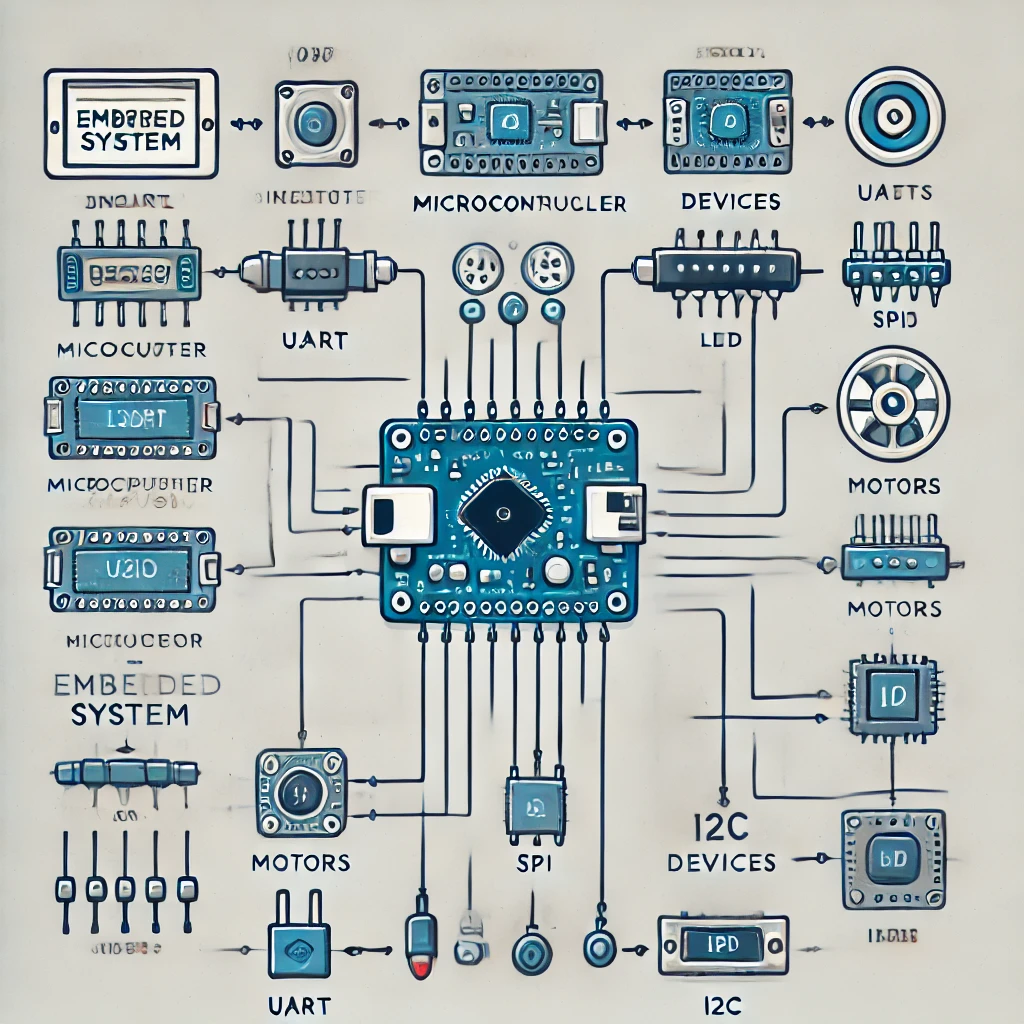Introduction to Microcontrollers: What They Are and How They Work
Microcontrollers (MCUs) are the backbone of embedded systems, controlling a vast array of devices, from everyday household gadgets to sophisticated industrial machinery. They are compact, highly integrated circuits that contain all the essential components required to perform specific tasks. In this article, we’ll explore what microcontrollers are, how they work, and their key components.

What is a Microcontroller?
A microcontroller is essentially a small computer on a single integrated circuit (IC). Unlike a general-purpose computer, which handles a broad range of tasks, a microcontroller is designed to perform specific functions within an embedded system. For example, they are used in washing machines, remote controls, medical devices, and automotive systems. Microcontrollers typically contain the following components:
- Central Processing Unit (CPU): The brain of the microcontroller, responsible for executing instructions.
- Memory: This includes both volatile memory (RAM) for temporary data storage and non-volatile memory (Flash/EEPROM) for program and data storage.
- Input/Output (I/O) Ports: Allow the microcontroller to interact with external devices like sensors, displays, or motors.
- Timers and Counters: Provide precise timekeeping and event counting functionalities.
- Peripherals: Additional integrated components like analog-to-digital converters (ADC), communication modules (UART, SPI, I2C), and pulse-width modulation (PWM) modules for controlling external devices.
Key Components of a Microcontroller
Central Processing Unit (CPU)
The CPU is the core of the microcontroller, executing instructions from the program stored in the memory. It processes input data, performs computations, and controls the operations of other components. The CPU in a microcontroller is often simpler and less powerful compared to general-purpose CPUs, as the tasks it handles are more focused and repetitive.
Memory
Microcontrollers have two types of memory:
- RAM (Random Access Memory): This is volatile memory used for storing temporary data and variables needed during program execution.
- Flash Memory: This non-volatile memory stores the microcontroller's program and any permanent data. The program stored in flash memory persists even when the device is powered off.
Input/Output (I/O) Ports
I/O ports allow the microcontroller to communicate with external devices. For example, you can connect sensors to input ports to receive data, or connect motors, LEDs, and displays to output ports for controlling external devices.
Timers and Counters
Timers are critical for tasks requiring precise timing, such as measuring the duration of events or generating periodic signals (like clock pulses). Counters are used for counting external events, such as counting how many times a button is pressed.
Peripherals
Microcontrollers often integrate several communication peripherals that allow them to interact with other devices and systems:
- UART (Universal Asynchronous Receiver-Transmitter): Used for serial communication with external devices like PCs or other microcontrollers.
- SPI (Serial Peripheral Interface): A synchronous communication protocol used for high-speed data exchange between devices like sensors or memory chips.
- I2C (Inter-Integrated Circuit): Another communication protocol, used for connecting multiple devices on the same data line.
- ADC (Analog-to-Digital Converter): Converts analog signals from sensors into digital data that the microcontroller can process.
How Microcontrollers Work
Fetch-Decode-Execute Cycle
The CPU fetches instructions from memory, decodes them, and executes the operations. These instructions tell the microcontroller what to do, whether it's reading sensor data, controlling a motor, or sending data via communication ports.
Interfacing with External Devices
Microcontrollers gather input from external sensors (e.g., temperature, pressure, or light sensors), process that information, and send commands to output devices like motors, actuators, or displays.
Real-Time Processing
Many microcontrollers are designed for real-time processing, meaning they respond to inputs or events almost immediately. For example, an automotive microcontroller might process sensor data and adjust engine parameters in real time to improve fuel efficiency.
Applications of Microcontrollers
- Consumer Electronics: TVs, microwave ovens, remote controls.
- Automotive Systems: Engine control units (ECUs), anti-lock braking systems (ABS), airbag controllers.
- Medical Devices: Pacemakers, insulin pumps, and diagnostic devices.
- Industrial Automation: Robotics, control systems, and factory automation.
Learn More About CPUs
Interested in a more detailed discussion about Central Processing Units (CPU) and how they work? Click the button below to dive deeper into the topic.
Read More About CPUs